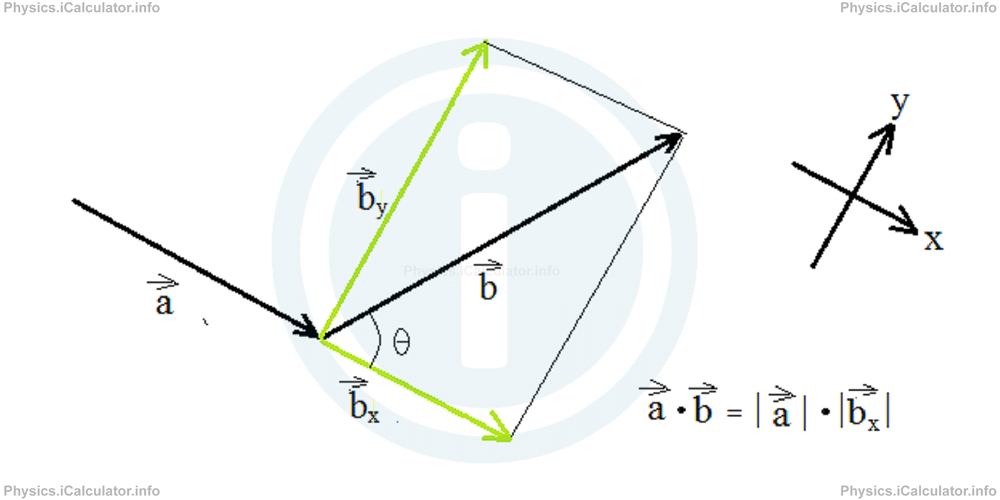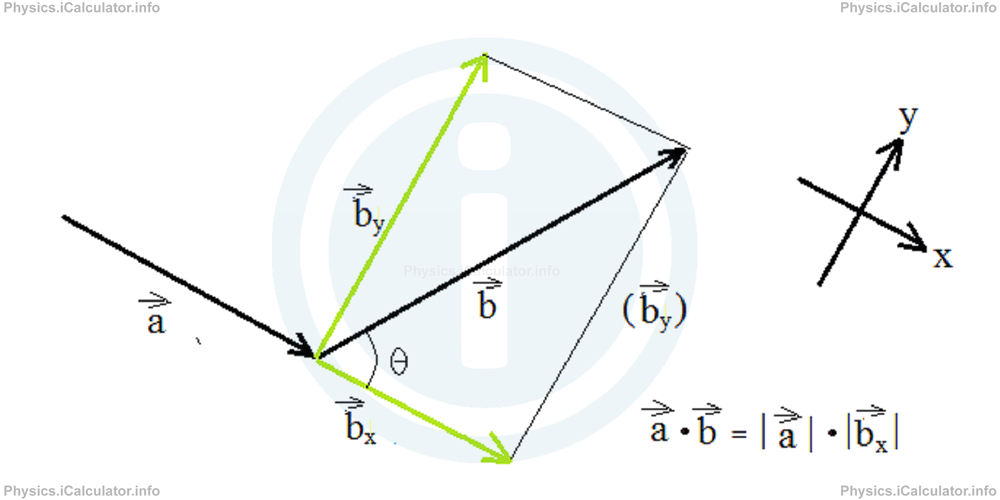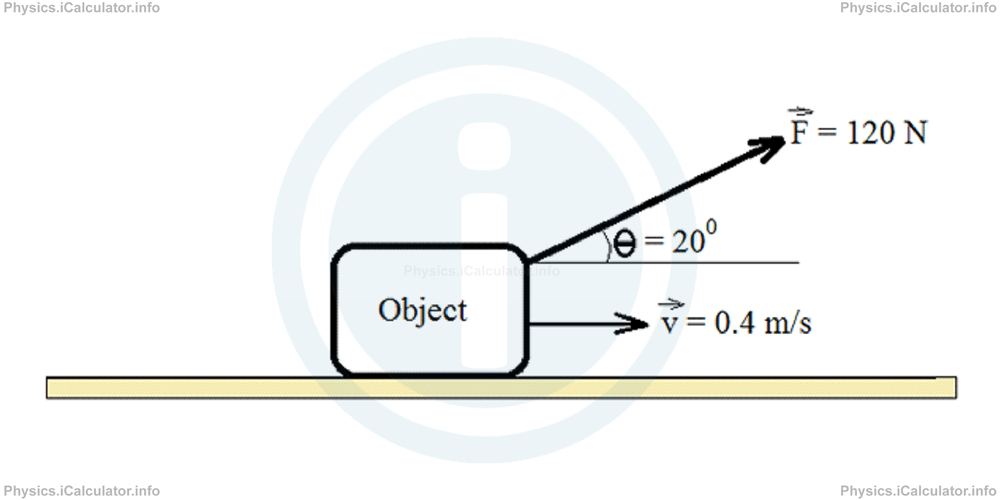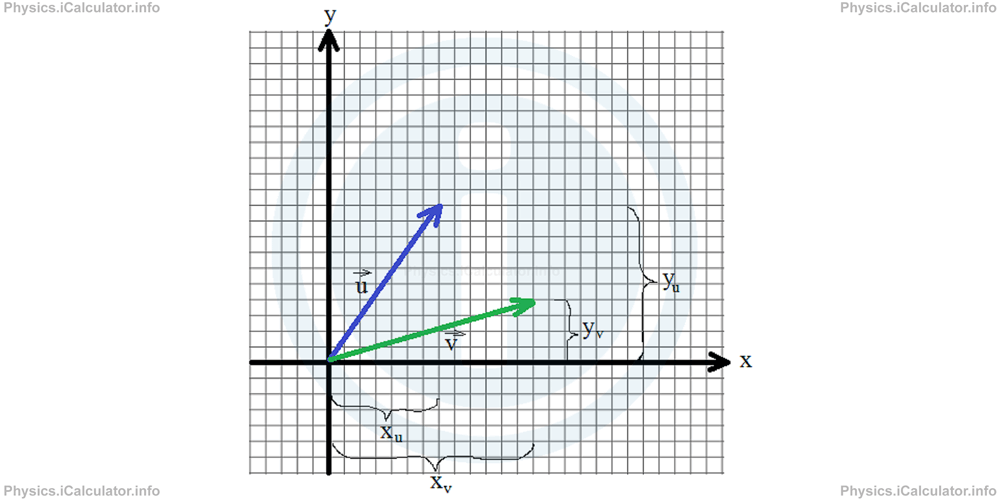Menu
Physics Lesson 2.4.1 - How to calculate the dot (scalar) product of two vectors
Please provide a rating, it takes seconds and helps us to keep this resource free for all to use
Welcome to our Physics lesson on How to calculate the dot (scalar) product of two vectors, this is the first lesson of our suite of physics lessons covering the topic of Dot (Scalar) Product of Two Vectors, you can find links to the other lessons within this tutorial and access additional physics learning resources below this lesson.
How to calculate the dot (scalar) product of two vectors
If we appoint a basic direction (for example Ox) to the first vector a⃗, we write as b⃗x instead of b⃗||a the component of the vector b⃗ in the direction of a⃗. It is obvious the component of vector b⃗ perpendicular to a⃗ is denoted as b⃗y instead of b⃗⊥a.
Also, we can appoint a letter (for example θ) to the acute angle formed by the vector a⃗ (or its extension) and the vector b⃗. Therefore, the above figure is written as:

The component b⃗y is equal in length to the opposite side to the angle θ for the triangle shown in the figure. Therefore, we can "close" this triangle to form a right triangle as shown below.

From trigonometry, it is known that in a right triangle (as the one shown in the above figure), we have
and
Therefore, for the dot (scalar) product of the vectors a⃗ and b⃗ we can write:
=|a⃗ | ∙ |b⃗ | ∙ cos θ
It is obvious the above product represents a scalar (number) c, not a vector, because we found it by multiplying two vector magnitudes (which are simply numbers) and the cosine of an angle (which is a number as well). Hence, if we denote by c the dot product of two vectors a⃗ and b⃗, we obtain
Example 1
Mechanical Power P in Physics is alternatively defined as the dot product of force F⃗ exerted on an object and the velocity v⃗ gained by the object due to the action of this force.
A 120 N force acts at an object at 200 to the horizontal direction as shown in the figure. As a result, the object moves at constant velocity by a magnitude of 0.4 m/s. Calculate the useful power delivered by the source in Watts (1 Watt = 1 Joule ∙ second). Take cos 200 = 0.94, sin 200 = 0.34.

Solution 1
As stated above, by definition, Power is the scalar product of Force and Velocity. From the mathematical definition of the scalar product of two vectors, we know that to find the dot product of two vectors, we must multiply one vector with the component of the other vector in the direction of the first one. In the specific case, the movement occurs in the direction of the velocity vector. Therefore, we take the velocity vector as the first one and express the direction of force vector in terms of it. Thus, we must multiply in scalar mode the velocity vector v⃗ and the component of force F⃗ according to the direction of v⃗. This means we have to calculate:
=|v⃗ | ∙ |F⃗n the direction of v |
=|v⃗ | ∙ F⃗ ∙ cos θ
After substituting the values, we obtain
= 45.12 Watt
Another method for calculating the dot product of two vectors. Calculating the dot product using coordinates
If the coordinates of the two vectors are known, it is much easier to calculate their dot product. We don't need to know the angle in-between or the magnitudes of the vectors. We can use the formula:
This formula is particularly useful when none of vectors lies according to a main direction (axis). Thus, instead of trying to calculate the angle in-between by finding the difference of two angles (the angle formed by the vector u⃗ to the horizontal axis minus the angle formed by the vector v⃗ to the horizontal axis) (look at the figure below), and then expressing the direction of the second vector in terms of the first one, it is much easier multiplying only the coordinates as no angle is needed here.

For simplicity, both vectors are taken with their origin (tail) at (0, 0). The procedure to calculate the angle between the two vectors is quite long. First, we need to find the angles formed by each vector to the horizontal direction by considering the tangents (y-coordinate / x-coordinate). After finding each tangent, we find the respective angles using a scientific calculator. Afterwards, we subtract the angles to find the angle between the two vectors. Finally, we can use the (first) dot product formula to find the result. As you see, it is not worth trying it.
By using the new formula of dot product, we find the result in a much easier way. Thus, from the figure you can find all coordinates you need. They are: xu = 7 units, xv = 13 units, yu = 10 units and yv = 4 units.
Substituting the above values, we obtain
= (7 ∙ 13 + 10 ∙ 4) units
= (91 + 40) units
= 131 units
You have reach the end of Physics lesson 2.4.1 How to calculate the dot (scalar) product of two vectors. There are 2 lessons in this physics tutorial covering Dot (Scalar) Product of Two Vectors, you can access all the lessons from this tutorial below.
More Dot (Scalar) Product of Two Vectors Lessons and Learning Resources
Whats next?
Enjoy the "How to calculate the dot (scalar) product of two vectors" physics lesson? People who liked the "Dot (Scalar) Product of Two Vectors lesson found the following resources useful:
- Calculate Feedback. Helps other - Leave a rating for this calculate (see below)
- Vectors and Scalars Physics tutorial: Dot (Scalar) Product of Two Vectors. Read the Dot (Scalar) Product of Two Vectors physics tutorial and build your physics knowledge of Vectors and Scalars
- Vectors and Scalars Video tutorial: Dot (Scalar) Product of Two Vectors. Watch or listen to the Dot (Scalar) Product of Two Vectors video tutorial, a useful way to help you revise when travelling to and from school/college
- Vectors and Scalars Revision Notes: Dot (Scalar) Product of Two Vectors. Print the notes so you can revise the key points covered in the physics tutorial for Dot (Scalar) Product of Two Vectors
- Vectors and Scalars Practice Questions: Dot (Scalar) Product of Two Vectors. Test and improve your knowledge of Dot (Scalar) Product of Two Vectors with example questins and answers
- Check your calculations for Vectors and Scalars questions with our excellent Vectors and Scalars calculators which contain full equations and calculations clearly displayed line by line. See the Vectors and Scalars Calculators by iCalculator™ below.
- Continuing learning vectors and scalars - read our next physics tutorial: Vector Product of Two Vectors
Help others Learning Physics just like you
Please provide a rating, it takes seconds and helps us to keep this resource free for all to use
We hope you found this Physics lesson "Dot (Scalar) Product of Two Vectors" useful. If you did it would be great if you could spare the time to rate this physics lesson (simply click on the number of stars that match your assessment of this physics learning aide) and/or share on social media, this helps us identify popular tutorials and calculators and expand our free learning resources to support our users around the world have free access to expand their knowledge of physics and other disciplines.